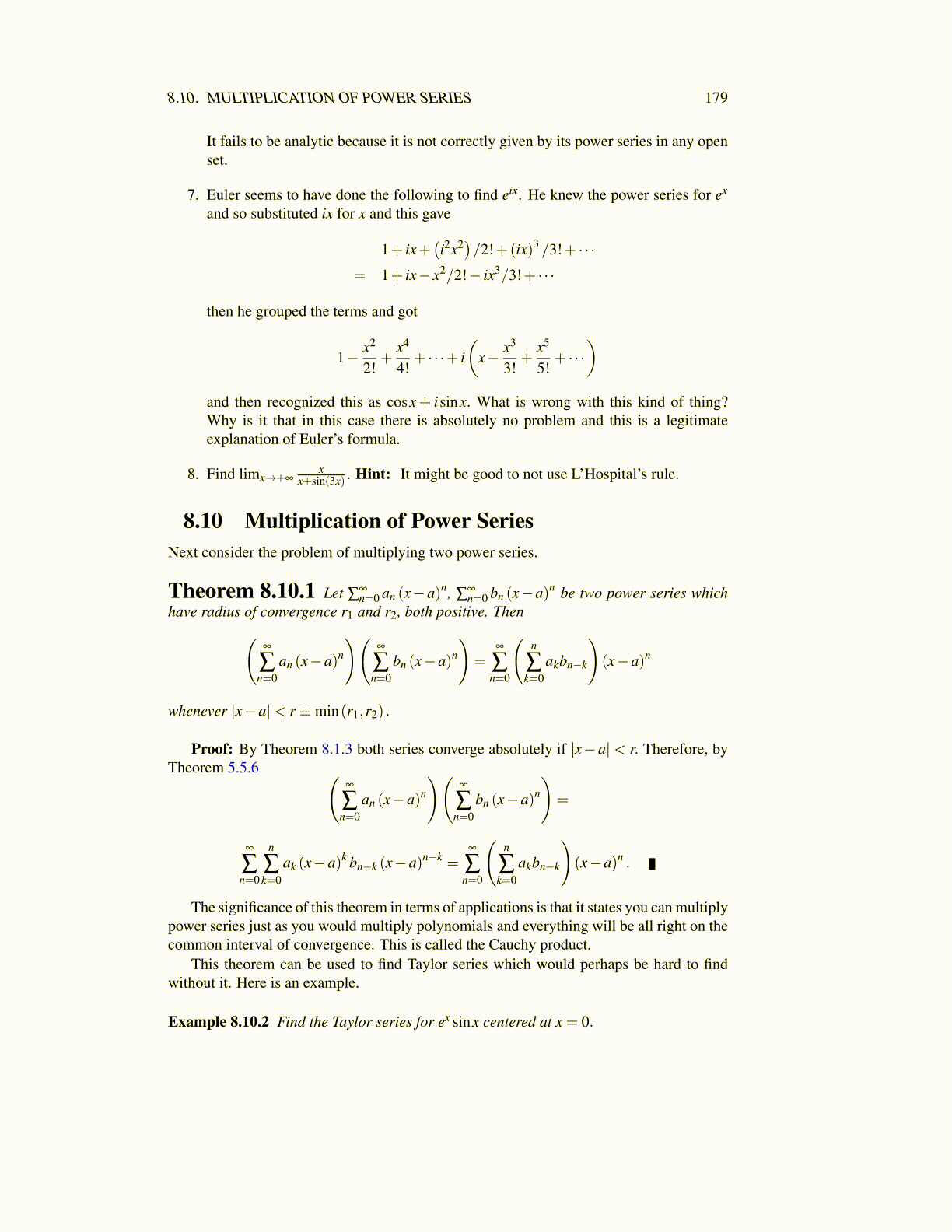
8.11. EXERCISES 179
issues here about whether tanx even has a power series, but if it does, the above must beit. In fact, tan(x) will have a power series valid on some interval centered at 0 and thisbecomes completely obvious when one uses methods from complex analysis but it isn’t tooobvious at this point. If you are interested in this issue, read the last section of the chapter.Note also that what has been accomplished is to divide the power series for sinx by thepower series for cosx just like they were polynomials.
8.11 Exercises1. Find the radius of convergence of the following.
(a) ∑∞k=1( x
2
)n
(b) ∑∞k=1 sin
( 1n
)3nxn
(c) ∑∞k=0 k!xk
(d) ∑∞n=0
(3n)n
(3n)! xn
(e) ∑∞n=0
(2n)n
(2n)! xn
2. Find ∑∞k=1 k2−k.
3. Find ∑∞k=1 k23−k.
4. Find ∑∞k=1
2−k
k .
5. Find ∑∞k=1
3−k
k .
6. Show there exists a function f which is continuous on [0,1] but nowhere differen-tiable and an infinite series of the form ∑
∞k=1 pk (x) where each pk is a polynomial
which converges uniformly to f (x) on [0,1] . Thus it makes absolutely no sense towrite something like f ′ (x) = ∑
∞k=1 p′k (x) . Hint: Use the Weierstrass approximation
theorem.
7. Find the power series centered at 0 for the function 1/(1+ x2
)and give the radius
of convergence. Where does the function make sense? Where does the power seriesequal the function?
8. Find a power series for the function f (x)≡ sin(√
x)√x for x > 0. Where does f (x) make
sense? Where does the power series you found converge?
9. Use the power series technique which was applied in Example 8.6.1 to consider theinitial value problem y′ = y,y(0) = 1. This yields another way to obtain the powerseries for ex.
10. Use the power series technique on the initial value problem y′+ y = 0, y(0) = 1.What is the solution to this initial value problem?
11. Use the power series technique to find solutions in terms of power series to the initialvalue problem
y′′+ xy = 0, y(0) = 0,y′ (0) = 1.
Tell where your solution gives a valid description of a solution for the initial valueproblem. Hint: This is a little different but you proceed the same way as in Example8.6.1. The main difference is you have to do two differentiations of the power seriesinstead of one.
12. Find several terms of a power series solution to the nonlinear initial value problem
y′′+asin(y) = 0, y(0) = 1,y′ (0) = 0.